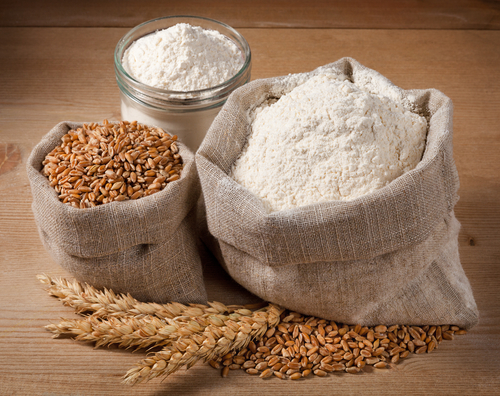Short answer
Wheat flour is not terrible for you—although it is full of gluten and can spike blood sugar. It contains significant amounts of dietary fiber, vitamins, and minerals, making it a healthier alternative to white flour.
Recommended Alternative
Long answer
White flour is bad for you. We all know that by now, right? It’s overly processed, bleached and full of several other chemical additives. With all that being common knowledge, wheat flour might seem like the much healthier alternative.
But is it really? Or could wheat flour be bad for you, too?
First, let’s look at the perks. Like white flour, wheat flour is incredibly versatile. It is a key ingredient in many different baked goods, most notably bread. Other popular wheat-based products include cereal, pasta, and couscous.
In addition to being incredibly versatile, whole wheat flour also offers significant fiber. Getting enough fiber in your diet is essential, as it helps prevent constipation, reduce cholesterol and some studies show that it may even help you lose weight. For these reasons, Colorado State University recommends an intake of 28 grams daily for those on a 2,000-calorie diet. Wheat flour makes it much easier to meet this requirement than white flour, offering around six times the fiber content.
Wheat flours also pack far more nutrients than white flour, on average. Each serving offers substantial folate, riboflavin, B vitamins and so much more. With white flour, these nutrients are mostly destroyed during the extensive manufacturing process. For instance, a half-cup of whole wheat flour includes three milligrams of niacin, while an equal amount of white contains less than one milligram.
While wheat flour offers baking versatility and a plethora of nutrients, there are a few downsides to it—and wheat products in general—that you should be aware of. First, wheat flour is loaded with gluten, which is the main protein of wheat. Gluten is indigestible to those with celiac disease, a serious illness which may affect up to one percent of the American population. A much larger portion of the population suffers from gluten sensitivity. In both cases, the body sees gluten as a foreign body and attempts to attack it, which can seriously damage the intestinal lining and lead to pain, anemia and bloating, for starters.
Even if you don’t have a gluten sensitivity, consuming wheat products can still have a negative impact on your body. Both wheat and white flour have a high glycemic index or GI: the average loaf of bread has a GI of 71. Foods with a high GI are broken down rapidly, which causes significant spikes in the body’s blood sugar. After the blood sugar drops, it tends to stimulate hunger—that’s why eating foods with a high GI have been linked to obesity, diabetes, and other serious illnesses.
Our advice? If you have a choice between the two, opt for wheat flour over white. And if you are gluten-sensitive or looking to avoid a blood sugar spike, seek non-wheat grain alternatives: quinoa, oat, corn, and buckwheat or even those made from coconuts and almonds.
Possible short-term side effects
- spikes blood sugar
- abdominal pain
- bloating
Possible long-term side effects
- anemia
- obesity
- diabetes
Ingredients to be aware of

Benefits
- contains fiber
- provides vitamins and minerals
- healthier alternative to white flour
Our Wellness Pick (what is this?)
Bob's Organic Whole Wheat Flour
- 100% organic
- Rich in fiber
- Whole grain nutrition
- Non-GMO verified
- Versatile baking ingredient
 Approved by
Approved by 















